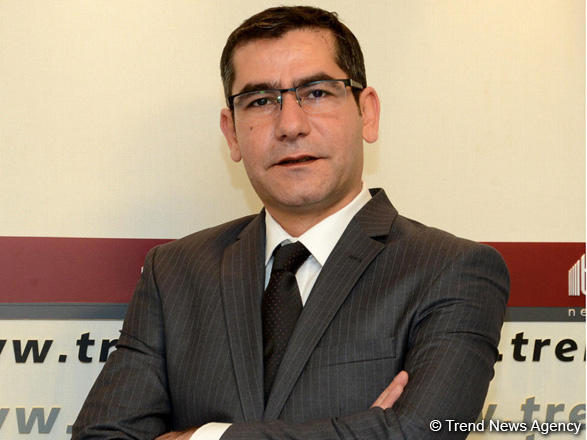Baku, Azerbaijan, May 4
By Dalga Khatinoglu – Trend:
Iran inaugurated the first phase of the Persian Gulf Star Refinery last week. The project consists of three phases, with 120,000 barrels per day (b/d) of oil processing capacity each one.
Recently, Seyyed Ebrahim Raeisi, the Iranian President Hassan Rouhani’s major rival in upcoming elections, said the refinery should have become fully operational in 2014 and the delay cost billions of dollars to Iran. He claimed that the refinery was completed by 70.4 percent when Rouhani took office in mid-2013.
Oil Ministry released a report Apr. 4, saying the progress in the project in mid-2013 was only 47.9 percent. The ministry accused Raeisi’s advisors of giving him false information.
"Raeisi’s advisors were in ex-president Mahmoud Ahmadinejad’s administration and they should clarify why the project started in 2007 and was completed by less than half in 2013," the Oil Ministry said.
Why Iran started the project?
Iran started construction of the refinery in 2007, after UN Security Council adopted three resolutions on the country’s disputed nuclear program. The feedstock of this refinery is gas condensate and it seems Iran was preparing to possible oil-related sanctions similar to what were imposed on Iraq during Saddam Hussein regime. Such a scenario really happened in 2012, when the West imposed oil-related sanctions on Tehran, leading to shutting off some oil fields and a 1 mb/d decline in oil output to 2.8 mb/d.
However, gas condensate – also called ultra-light oil – is extracted from gas fields and Iran was not able to shut down its gas fields due to the country’s extreme need for natural gas. Iran had to store above 50 million barrels of unsold gas condensate on tankers during the sanctions era. Iranian officials even put the stockpile volume at 70 mb.
Iran was producing about 250,000 b/d of gas condensate in 2010, of which about 225,000 b/d (11.267 million tons) was exported. However, Iran has boosted gas condensate production, especially during Rouhani’s administration, to 560,000 b/d in 2016, while the domestic demand increased to 160,000 b/d, all of which was consumed in petrochemical plants.
During last year, after elimination of sanctions in January 2016, Iran finally got rid of restrictions and increased gas condensate export by about 77.8 percent to 18.663 million tons (or 375,000 b/d), said a Customs Administration report. The figure doesn’t include the stockpiled gas condensate sale as well as the stockpile abroad. According to Iranian officials’ statements, the total gas condensate sale was 206 million barrels.
Iran also plans to complete the South Pars phases (except for Phase 11) in coming two years, and the gas condensate output would exceed 900,000 b/d. Meanwhile, Donald Trump has less tolerance to Iran’s policy compared to his predecessor Barack Obama, and the possibility of new sanctions on Iran is very high.
Therefore, Iran extremely needs to complete the Persian Gulf Star Refinery, both for becoming self-sufficient in gasoline production and also to avoid storing tens of millions of gas condensate on tankers for years again.
During Ahmadinejad’s presidency, contractors of the refinery changed three times and $2.3 billion investment was spent to the project, despite the initial plan which projected a full completion of the project in 2011 with $3 billion expenditures.
According to officials, the total expenditures on the project reached $3.7 billion as of May 2017 and it would become fully operational by March 20.
Iran’s gasoline demand
Iran consumed 74.5 million liters per day (ml/d) of gasoline last year, which was above 5 percent more than the previous year. It imported about 12 ml/d of gasoline, or about 30 percent more than the previous year.
The full completion of the first phase of Persian Gulf Star would add 12 ml/d of gasoline to production level. However, it doesn’t seem that the country will become self-sufficient this year, because it also has demand growth.
Iran plans to complete four refineries, with overall capacity of 1.290 mb/d, and inaugurate them in the coming years.
The Persian Gulf Star Refinery will add 360,000 b/d, while Siraf Complex, Anahita and Bahman Geno refineries will add 480,000 b/d, 150,000 b/d and 300,000 b/d to Iran’s current refining capacity, which stands at 1.8 mb/d.
Iran’s current nominal oil refining capacity stands at 1.8 mb/d, but the actual capacity is less than 1.7 mb/d.
Iran plans to start gasoline export and increase gas oil export in the coming years, as demonstrated in the chart below:

---
Dalga Khatinoglu is the head of Trend Agency’s Iran news service, follow him on Twitter: @dalgakhatinoglu






